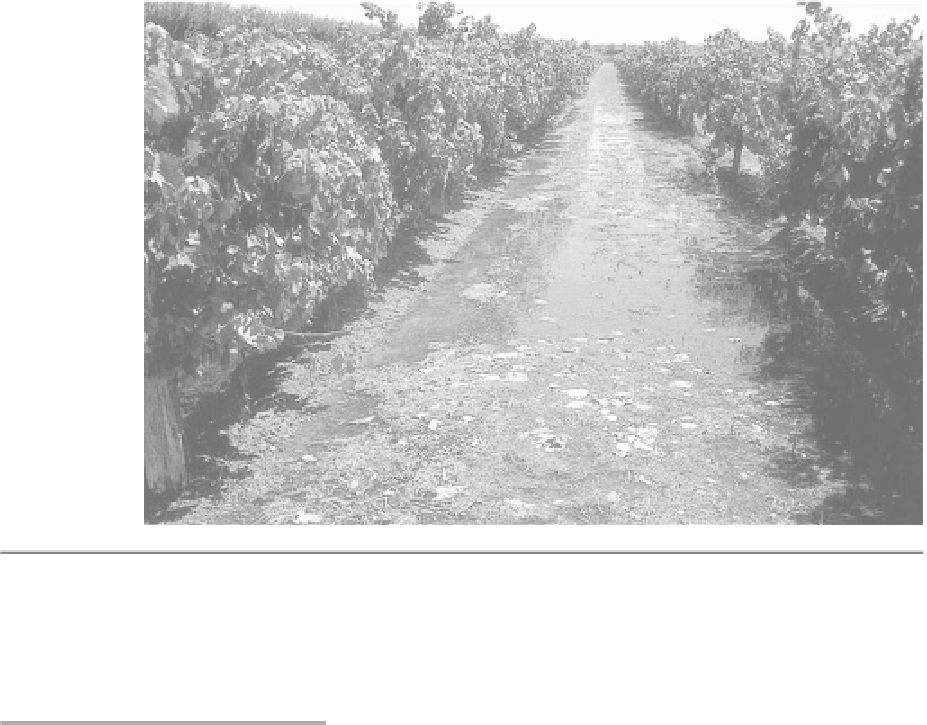Agriculture Reference
In-Depth Information
Figure 6.10
Poor control of water applied under flood irrigation in the Riverland region of South
Australia. Photograph by the author.
Summary Points
6.7
This chapter explored the complex relationships among soil, water, and grapevines.
The major points are as follows:
■
Water is held in the soil's pore space, and the volume of water per unit volume
of soil defines the
volumetric water content
. Various forces, adsorption, capillary,
and osmotic, as well as gravity, act on soil water to reduce its free energy. The ex-
tent of the reduction in energy is measured by the
soil water potential
. The ef-
fect of individual forces is expressed through the component potentials,
matric
m
s
.
■
The water potential can be expressed as energy/mole, or more commonly as en-
ergy/volume (pressure
p
) or energy/weight of water (head
h
). The units of head
are meters, which are most convenient when describing the movement of water
through soil using Darcy's Law.
■
Darcy's Law defines the relationship between the water flux through a cross sec-
tion of soil (
J
w
) and the head gradient (
dh/dx
), as
dh
(negative) and
pressure
p
(positive),
gravity
g
, and
osmotic
J
w
K
(
h
)
dx
■
K
is the
hydraulic conductivity
(mm/hr), which depends on
h
. When the soil is sat-
urated,
K
K
s
, the saturated hydraulic conductivity.
K
s
is the maximum value of
K
, and
K
falls sharply as the matric head (
p
) decreases, more so in sands than
in clay soils.
K
s
determines the steady state infiltration rate
IR
of a soil. When the
rainfall or irrigation rate exceeds the surface
IR
, surface runoff may occur.

